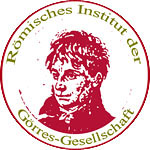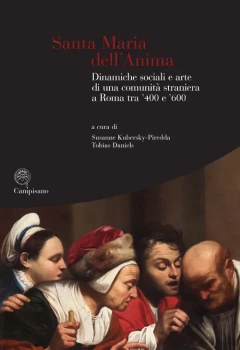The German national Church Santa Maria dell'Anima in Modern Times
Susanne Kubersky-Piredda from the Bibliotheca Hertziana and Tobias Daniels have published an impressive volume on the so-called German national church of the "Anima" in Piazza Navona in Rome in the first three centuries of its existence. It is part of the Hertziana's larger "Roma communis patria" project, which examines Rome's national churches and their confraternities from a historical and art-historical perspective.
The richly illustrated volume of 478 pages (with an index of names and places) offers essays of the highest academic standard. All contributions (most in Italian, some in German) are based on (archival) sources.
The volume is introduced by the editors with a contribution on social plurality, confessional issues and artistic identity at the church of Santa Maria dell'Anima (7-22). The aim is, on the one hand, to combine the historical with the art-historical view of the "Anima" and, on the other hand, to overcome the Germanic-national reading of Catholic historiography of the 19th/20th century, represented by the studies of Schmidlin and Lohninger, in favour of a more historically appropriate appreciation of the more fragmented nationes, whose diversity naturally led to situations of competition and conflict. The Reformation also played a role in the Brotherhood's internal disputes.
Of the various artefacts described, Andreas Raub's contribution on the Annen cult in the 16th century is worth mentioning. There are links here between the "Anima" and the "Campo Santo Teutonico". Raub gave a Görres lecture on this in 2016.
Johan Ickx, who wrote an article on the Bavarian polymath Johann Albrecht Widmanstetter in the Jubilee Year 1550, is also known from the Görres Institute (289-304).
Moritz Schönleben writes on the membership structure and decision-making of the Brotherhood of the Anima (305-320), Cecilia Mazzetti di Pietralata on German cardinals and their titular seats (389-416) and Tobias Daniels on German notaries (159-212).
Otherwise, the topics revolve around the church building of the Anima: the interior and its architectural symbolism (Sara Bova, 23-56), the "Alemannic building style" (Hubertus Günther, 57-104), the funerary monuments (Cristina Ruggero, 337-370), Flemish artists (Loredana Lorizzo, 371-388) and the sacristy (Giulia Iseppi, 417-462).
The index of names and places is an important aid to indexing the rich content of the volume. Not surprisingly, the Campo Santo Teutonico is also frequently mentioned (see index under "Roma-chiese" and - somewhat unfortunately - under "piazze", both p. 476).
- Details
- Written by: Stefan Heid
- Category: Recommended reading
 Römisches Institut der Görres-Gesellschaft
Römisches Institut der Görres-Gesellschaft







